
The house from "Morris's County Seats," circa 1875.
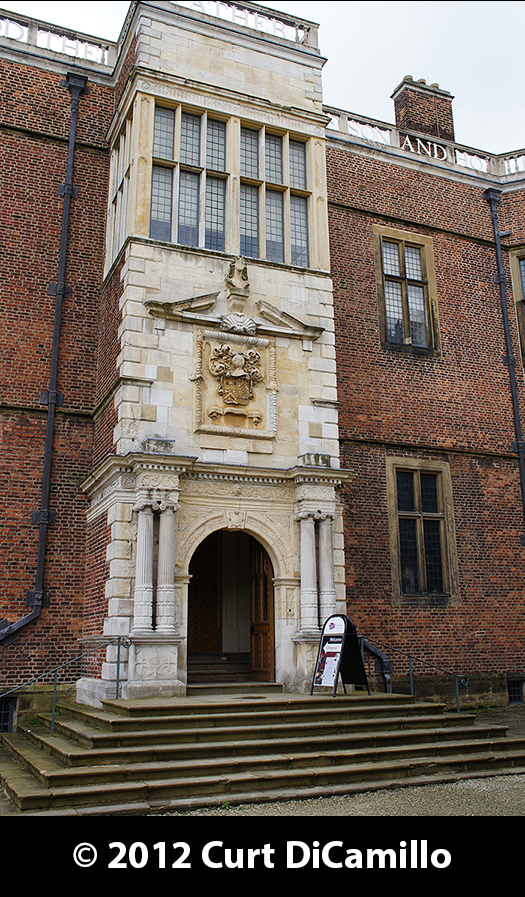
The entrance facade

The house

Mr. Woods's Library
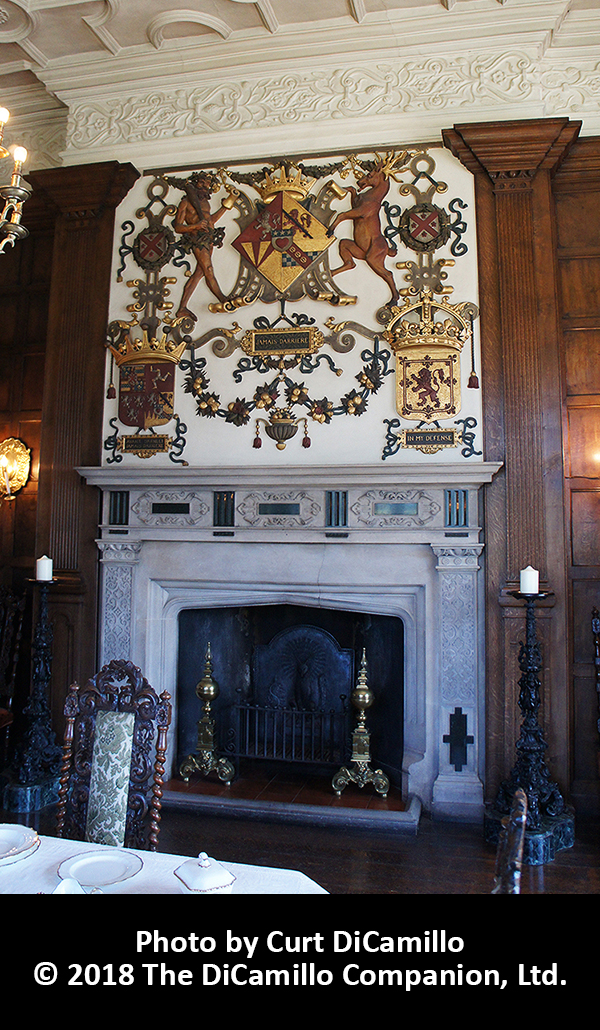
The dining room
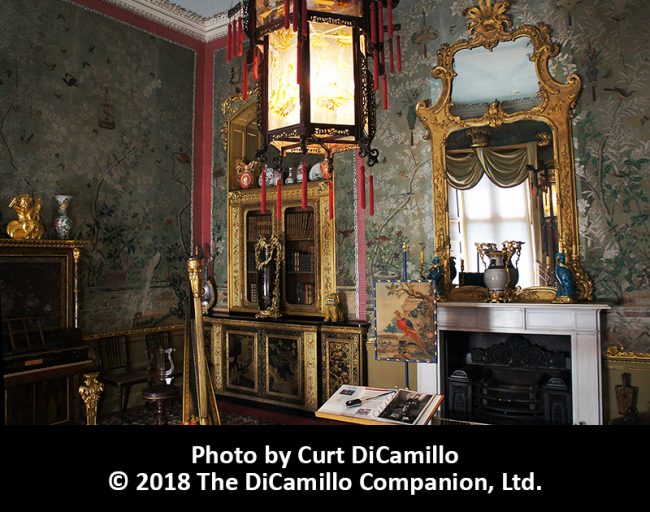
The Chinese Drawing Room
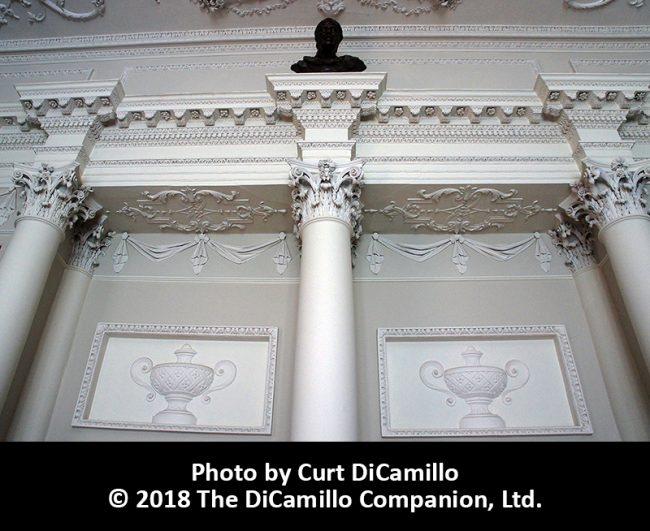
The library
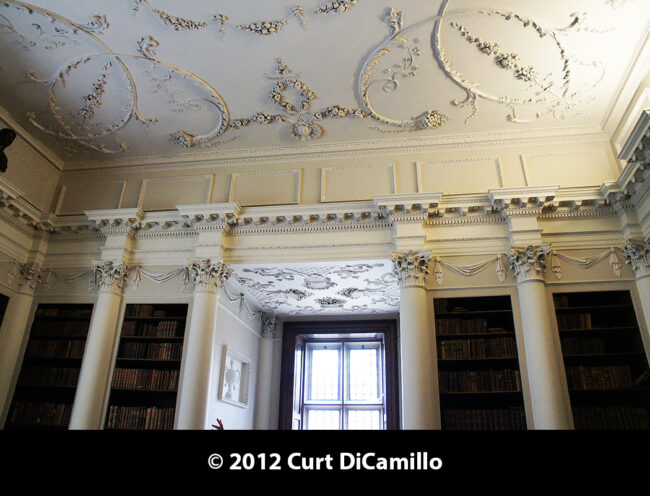
The library

The staircase

The long gallery

Table, made for Wentworth Woodhouse, today in the collection of Temple Newsam.
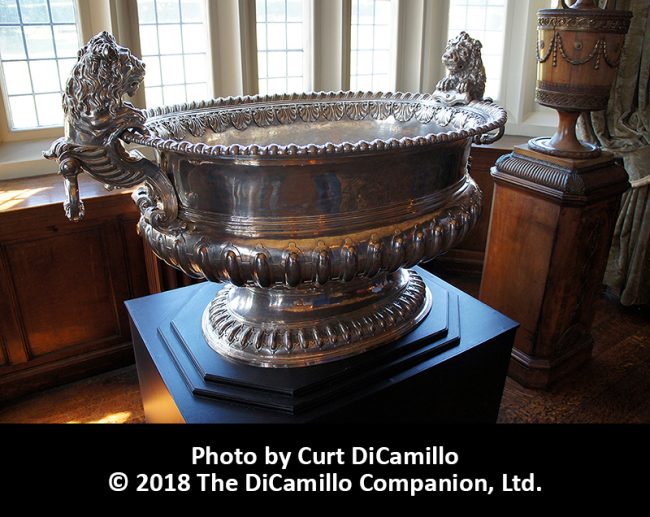
Lord Raby's silver cistern, formerly at Wentworth Castle, today in the collection of Temple Newsam.

Table from Ditchley Park, today in the collection of Temple Newsam.
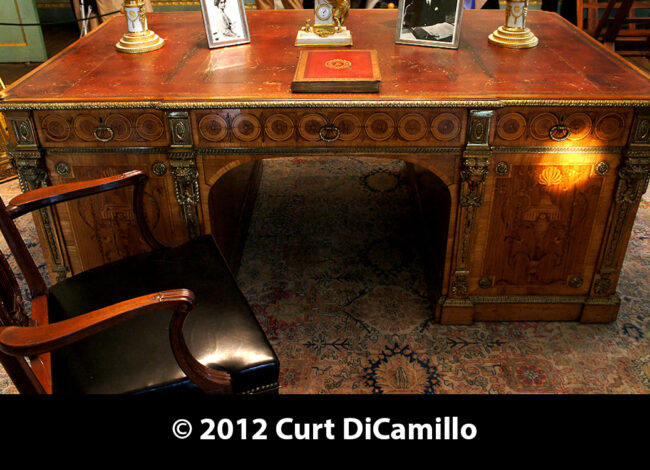
1771 desk made by Chippendale for the library at Harewood; since 1965 in the collection of Temple Newsam.
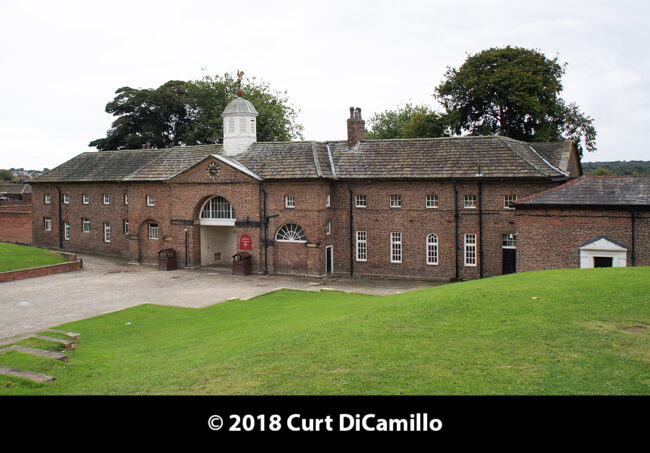
The stables
Earlier Houses: There were probably a number of earlier houses on the site of the current house.
House & Family History: There has been a property at Temple Newsam for almost a thousand years. Newsam (Anglo-Saxon for "new place") became Temple Newsam when it was acquired as a preceptory of the Knights Templar in the early Middle Ages. Its modern history began when the present house was built between 1500 and 1520 by Thomas Darcy, 1st Baron Darcy, a soldier, mercenary, and courtier to Henry VII and VIII. Lord Darcy backed the wrong side at the Reformation and his magnificent new courtyard house was given to the king's favorite niece, the scheming crypto-Catholic Margaret, Countess of Lennox; thus Temple Newsam became royal palace for some 20 years. Henry Stuart, Lord Darnley, the second husband of Mary, Queen of Scots, and father of James VI and I, was born and brought up at Temple Newsam. Queen Elizabeth seized the property on hearing the news of Darnley's marriage against her wishes, and the house became derelict. In 1622 Temple Newsam was purchased by the brilliant self-made oligarch Sir Arthur Ingram, whose descendants were to remain here for the next 300 years. He rebuilt the house to its present configuration and, most famously, added the lettering in the balustrade, which reads “All glory and praise be given to God the Father, the Son and the Holy Ghost on high, peace on earth good will towards men, honour and true allegiance to our gracious king, loving affection amongst his subjects, health and plenty be within this house." Nearly all Sir Arthur's descendants added something to Temple Newsam's interiors, the most notable being the 1745-46 long (picture) gallery, probably the finest interior of its date in England to survive intact. The family were ennobled as viscounts Irwin at the Restoration, but the title died out after the death of the 9th and last Viscount in 1777. The Ingrams had their ups and downs in financial terms (losing heavily in the financial crash of the South Sea Bubble in 1720), but they extricated themselves more than once by marrying splendid heiresses. In the early 19th century the properties were inherited by Lady Hertford, the intimate of the Prince Regent; she made some stylish changes inside (including a Chinese Room with wallpaper enhanced by cut-outs from Audubon's "Birds of America"). By the early 20th century the estates were producing very considerable income from coal and Temple Newsam was packed with works of art and lived in by the childless widow of the last descendant of Sir Arthur Ingram. In 1922 the house, together with 1,000 acres of parkland (but not the estate or the mineral reserves), was sold by the new heir, Edward Wood, the future Earl of Halifax of World War II fame, to Leeds City Council for £25,000, as a much-needed public amenity. Temple Newsam's art treasures were offered for another £10,000 but were turned down, thus the entire contents were sold or dispersed. For years the house was left virtually empty; then, just before World War II, the new curator of Leeds Art Gallery (Philip Hendy, recently arrived from the Museum of Fine Arts, Boston, and later director of the National Gallery, London) saw its potential as a decorative arts museum. The collection was developed with great speed from the 1940s to 70s, acquiring many magnificent treasures that were then being sold off from country houses. Its furniture, ceramics, and silver are especially esteemed and the house (now a country house art museum) came to be thought of as "the V&A of the North." Scholarly catalogs have been published on the collection and numerous significant exhibitions held. From the mid-1980s the policy has been to restore the building as closely as possible to its original splendor and to attempt to repatriate as many of the original contents as possible. Of the 40 rooms shown to visitors, only three now remain "museumified." (We are very grateful to James Lomax for this history of Temple Newsam). Temple Newsam was first opened to the public in 1923.
Collections: The majority of the contents of Temple Newsam were sold at auction in 1922. Five pictures that had been at the house since 1738-45 were purchased by the Leeds City Council in 1922, to remain on loan at Temple Newsam. A portrait of the 7th Viscount Irwin and his wife by Philip Mercier, circa 1743, is today in the collection of the Courtauld Institute of Art, London. Jeremiah Hargrave's pair of sarcophagus wine cisterns, obtained for Burton Constable Hall in 1769 by William Constable, were purchased by Leeds City Art Galleries for Temple Newsam for £120,000. Giacomo Raffaelli and Giuseppe Leonardi's pair of Italian marble and giltwood tables, purchased for Burton Constable by Sir Clifford Constable when in Rome circa 1815, were purchased by the Leeds City Art Galleries for Temple Newsam for £565,000. The desk, made in 1771 by Thomas Chippendale for the library at Harewood House, came into the Temple Newsam collection in 1965. It was that same year that the 7th Earl of Harewood placed the oak, rosewood, beech, pine, mahogany, holly, tulipwood, satinwood, and sycamore desk with Christie's. The price that the desk fetched, £43,050, was a world record at the time for a piece of English furniture at auction (see "Images" section). Almost every year a major trophy formerly in the collection returns to Temple Newsam; this is in addition to acquiring great decorative arts masterpieces, such as Lord Raby's (Thomas Wentworth's) massive silver wine cistern, made by Philip Rollos the Elder, 1705-06, and acquired by Temple Newsam in 2011 (see photo in "Image" section). Other recent activities include the restoration of the sumptuous Queen Anne state bed from Hinton House (deaccessioned by the Henry Ford Museum in the 1980s), and the completion of a catalog of the extensive wallpaper collection. In October of 2021 Temple Newsam acquired the circa 1770 Townley Commode for its collection. Commissioned by Charles Townley for Towneley Hall, the commode, which features Neoclassical inlaid wood panels that were copied from Townley’s copy of "Le Antichità di Ercolano," has a particularly luscious hardstone and lava top that Townley purchased on one of his Grand Tours.
Comments: Temple Newsam is frequently called "the Hampton Court of the North."
Garden & Outbuildings: Capability Brown designed the 1,500-acre parkland, which today includes the home farm and a working rare breed animal center (the largest in Europe, with over 400 animals). The garden is renowned for its rhododendron and azalea walk and features the National Plant Collections of Delphinium, Phlox, and Aster novi–belgii.
Architect: William Johnson
Date: 1792-95John Bernard (J.B.) Burke, published under the title of A Visitation of the Seats and Arms of the Noblemen and Gentlemen of Great Britain and Ireland, among other titles: Vol. I, p. 92, 1852.
John Preston (J.P.) Neale, published under the title of Views of the Seats of Noblemen and Gentlemen in England, Wales, Scotland, and Ireland, among other titles: Vol. V, 1822.
Country Life: XVI, 522, 1904. LII, 428, 1922. LXXXIII, 547 [Exhibition], 1938. CXLIV, 1054 [Chippendale Furniture], 1968.
Title: Art Treasures of England: The Regional Collections
Author: Waterfield, Giles; et al.
Year Published: 1998
Reference: pg. 34
Publisher: London: Royal Academy of Arts
ISBN: 0900946598
Book Type: Softback
Title: Creating Paradise: The Building of the English Country House, 1660-1880
Author: Wilson, Richard; Mackley, Alan
Year Published: 2000
Reference: pg. 17
Publisher: London: Hambledon and London
ISBN: 1852852526
Book Type: Hardback
Title: Country Life (magazine)
Author: NA
Year Published: NA
Reference: Feb 7, 2002, pg. 39
Publisher: Bath: Future plc
ISBN: NA
Book Type: Magazine
Title: Disintegration of a Heritage: Country Houses and their Collections, 1979-1992, The
Author: Sayer, Michael
Year Published: 1993
Publisher: Norfolk: Michael Russell (Publishing)
ISBN: 0859551970
Book Type: Hardback
House Listed: Grade I
Park Listed: Grade II
Past Seat / Home of: Thomas Darcy, 1st Baron Darcy of Darcy, 16th century. Margaret, Countess of Lennox, 16th century. Henry Stuart, Lord Darnley, 16th century. Sir Arthur Ingram, 17th century; Charles Ingram, 9th Viscount of Irvine, 18th century; Ingram family here until the early 19th century. Lady Hertford, early 19th century. Edward Frederick Lindley Wood, Viscount Halifax, early 20th century.
Current Ownership Type: Government
Primary Current Ownership Use: Museum
Ownership Details: Owned by Leeds City Art Gallery
House Open to Public: Yes
Phone: 01132-645-535
Fax: 01132-602-285
Email: [email protected]
Website: http://www.leeds.gov.uk/templenewsam
Historic Houses Member: Yes